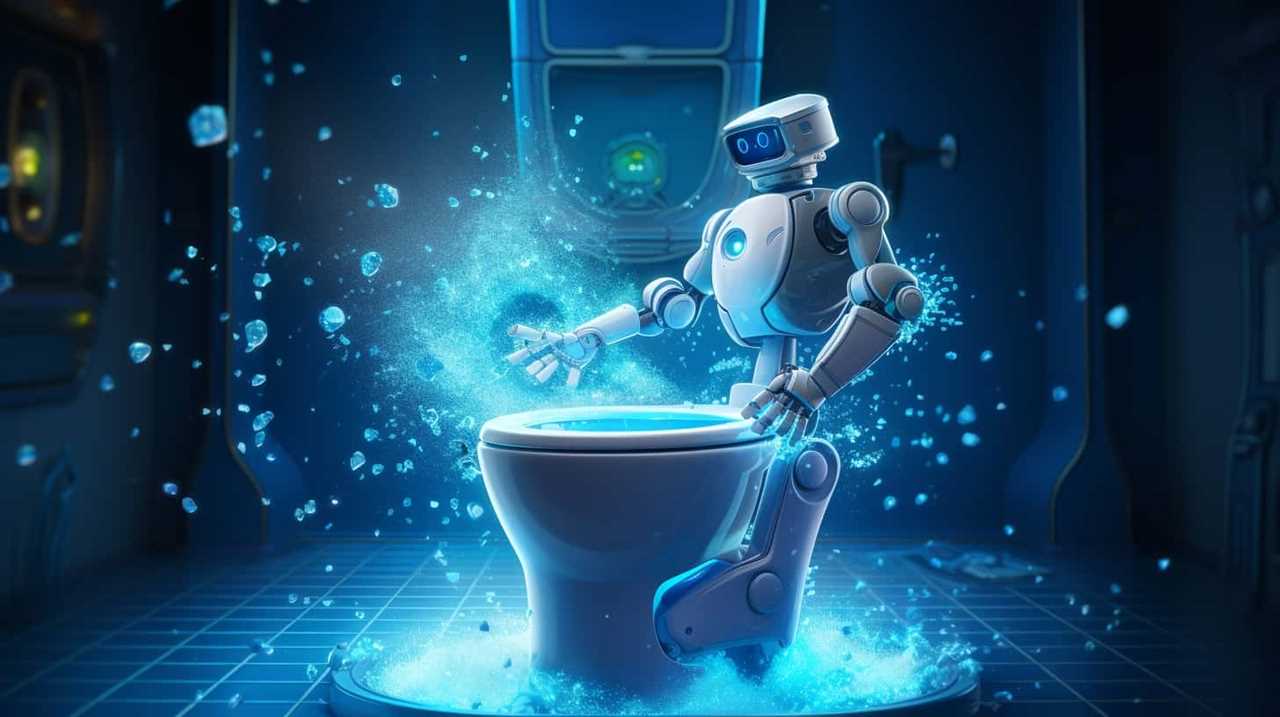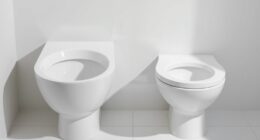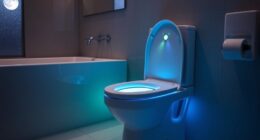Is the use of bleach tablets damaging your toilet? Let’s explore the potential dangers, impact on toilet parts, and the environmental consequences of using bleach tablets.
Discover alternatives for toilet cleaning and best practices for safely using bleach tablets. Our evidence-based article aims to provide you with all the technical information you need to master the art of toilet cleaning while ensuring the longevity and health of your toilet.
Let’s explore the truth behind bleach tablets and their impact on your porcelain throne.
Key Takeaways
- Bleach tablets can pose health risks, including respiratory problems, skin irritation, allergic reactions, and toxic fumes when mixed with other cleaning products.
- The use of bleach tablets can lead to discoloration and corrosion of toilet components such as the bowl, tank, flapper, and seat.
- Flushing bleach tablets can contribute to water pollution and harm aquatic life.
- It is important to consider alternative, more environmentally friendly options for toilet cleaning and to follow proper usage and disposal guidelines for bleach tablets.
The Potential Risks of Bleach Tablets
Our research suggests that the potential risks of bleach tablets in our toilets shouldn’t be underestimated.
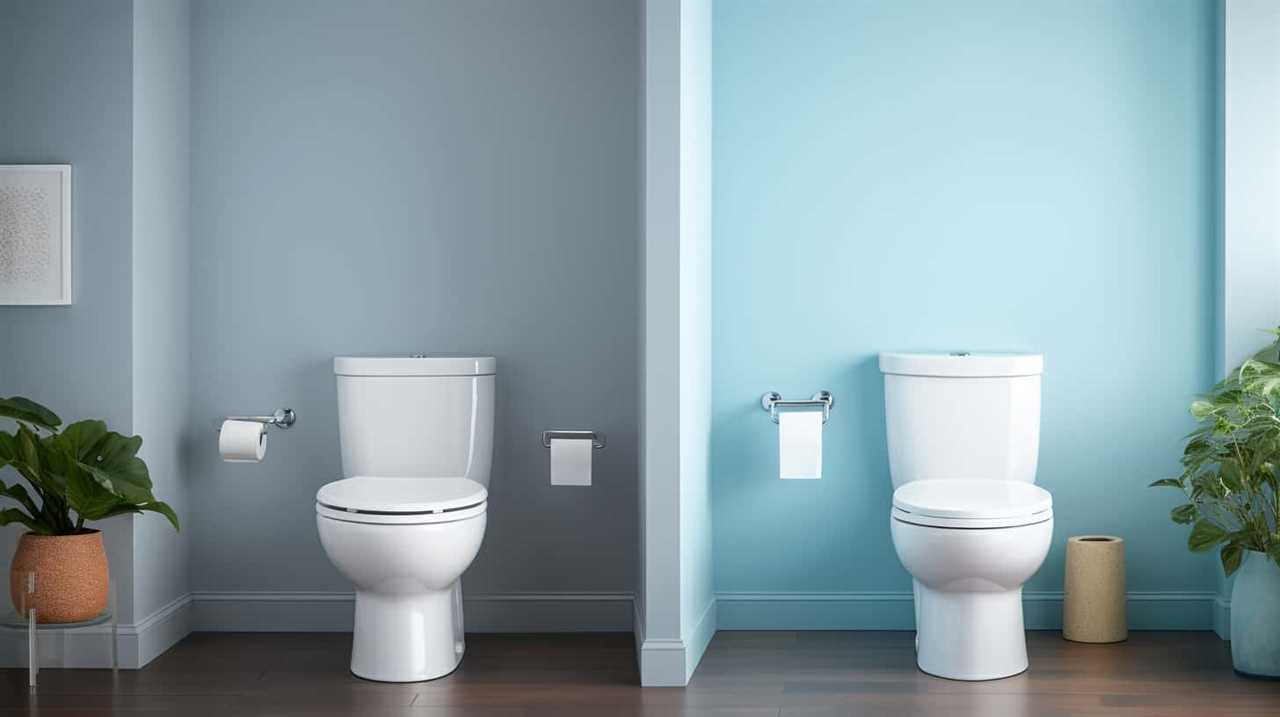
While bleach tablets are commonly used to keep our toilets clean and fresh, they can pose significant health concerns due to the chemical residue they leave behind. When bleach tablets dissolve in water, they release chlorine and other chemicals that can linger in the toilet bowl and contaminate the surrounding environment.
Breathing in these chemicals or coming into direct contact with them can lead to respiratory problems, skin irritation, and even allergic reactions. Additionally, the chemical residue can mix with other cleaning products, creating toxic fumes that are harmful to both humans and pets.
It’s crucial to be aware of these health risks and consider alternative cleaning methods to maintain a safe and healthy environment.
Moving forward, let’s explore the effects of bleach tablets on toilet components.
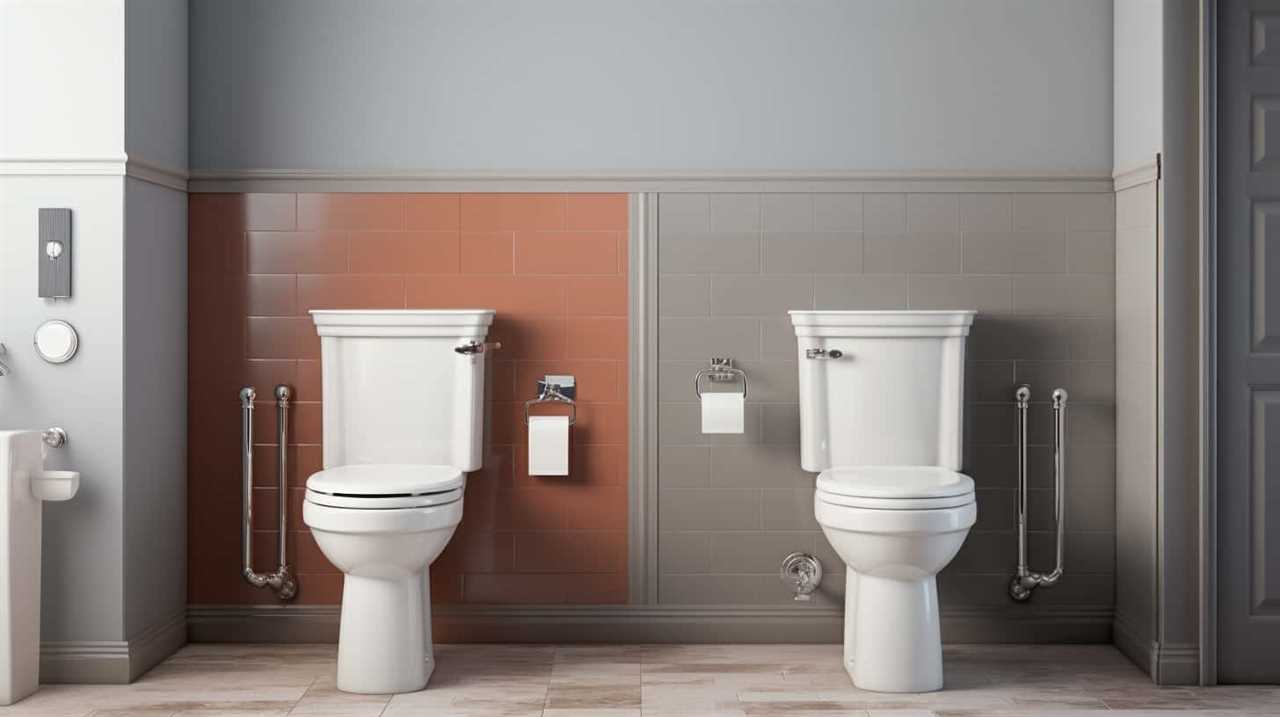
Effects of Bleach Tablets on Toilet Components
When using bleach tablets in our toilets, it’s important to consider the potential effects they can have on the various components of the toilet. While bleach tablets are effective in keeping our toilets clean and free from bacteria, they can also cause some unintended consequences. Here are the effects of bleach tablets on toilet components:
- Toilet bowl discoloration: Bleach tablets contain strong chemicals that can gradually discolor the porcelain of the toilet bowl, leaving behind unsightly stains.
- Tank damage: The concentrated bleach in the tablets can corrode the rubber flapper and other rubber or plastic parts in the toilet tank, leading to leaks and malfunctions.
- Toilet seat deterioration: The harsh chemicals in bleach tablets can degrade the materials of the toilet seat, causing it to crack or become brittle over time.
- Pipe corrosion: Excessive use of bleach tablets can corrode the metal pipes connected to the toilet, potentially leading to leaks and costly repairs.
To avoid these issues, it’s advisable to use bleach tablets sparingly and follow the manufacturer’s instructions carefully. Regular cleaning with milder alternatives may also help maintain the longevity of your toilet components.
Environmental Impact of Bleach Tablets
As we consider the effects of bleach tablets on toilet components, it’s important to also examine their environmental impact.
Bleach tablets, when flushed down the toilet, can have significant water pollution implications. The chemicals present in bleach tablets, such as chlorine, can react with organic matter in the water, forming harmful byproducts like chloramines and trihalomethanes. These byproducts can persist in the water supply and have long-term effects on aquatic life.
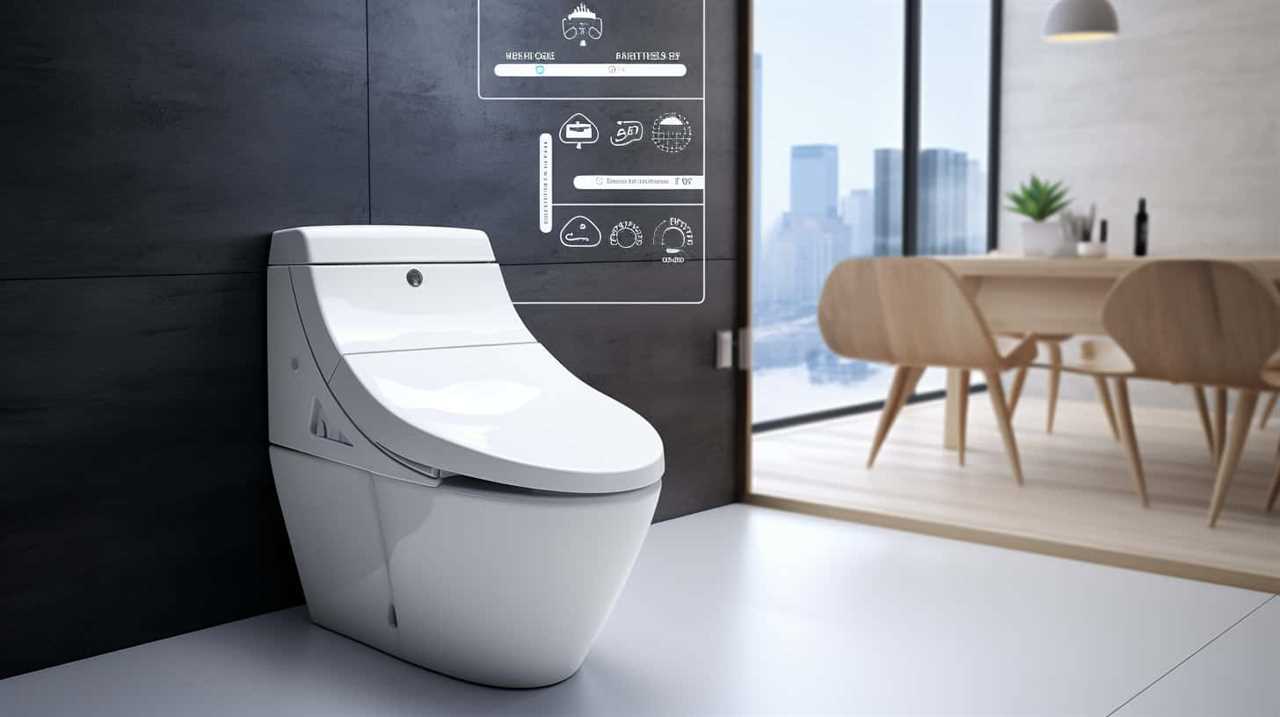
Studies have shown that exposure to chlorine-based disinfectants can lead to reproductive and developmental abnormalities in aquatic organisms. Additionally, the release of bleach tablets into the water can disrupt the natural balance of microorganisms, which play a vital role in maintaining water quality.
Therefore, it’s crucial to consider the environmental impact of bleach tablets and explore alternative, more sustainable options for toilet cleaning.
Alternatives to Bleach Tablets for Toilet Cleaning
To explore more sustainable options for toilet cleaning, we can consider using alternative products instead of bleach tablets. Here are some natural toilet cleaning alternatives and DIY solutions that you can try:
- Vinegar and baking soda: Mix equal parts of vinegar and water in a spray bottle. Spray the solution onto the toilet bowl and let it sit for a few minutes. Then, sprinkle baking soda on the surface and scrub with a toilet brush.
- Lemon juice: Squeeze fresh lemon juice onto the toilet bowl, focusing on stains and buildup. Let it sit for a few minutes before scrubbing with a brush.
- Borax: Dissolve 1/4 cup of borax in a cup of water and pour it into the toilet bowl. Let it sit overnight and scrub the next day.
- Castile soap: Mix a few drops of castile soap with warm water and use it to clean the toilet bowl. Scrub thoroughly and rinse.
These natural alternatives and DIY solutions provide effective cleaning without the use of bleach tablets, promoting a more sustainable approach to toilet maintenance.
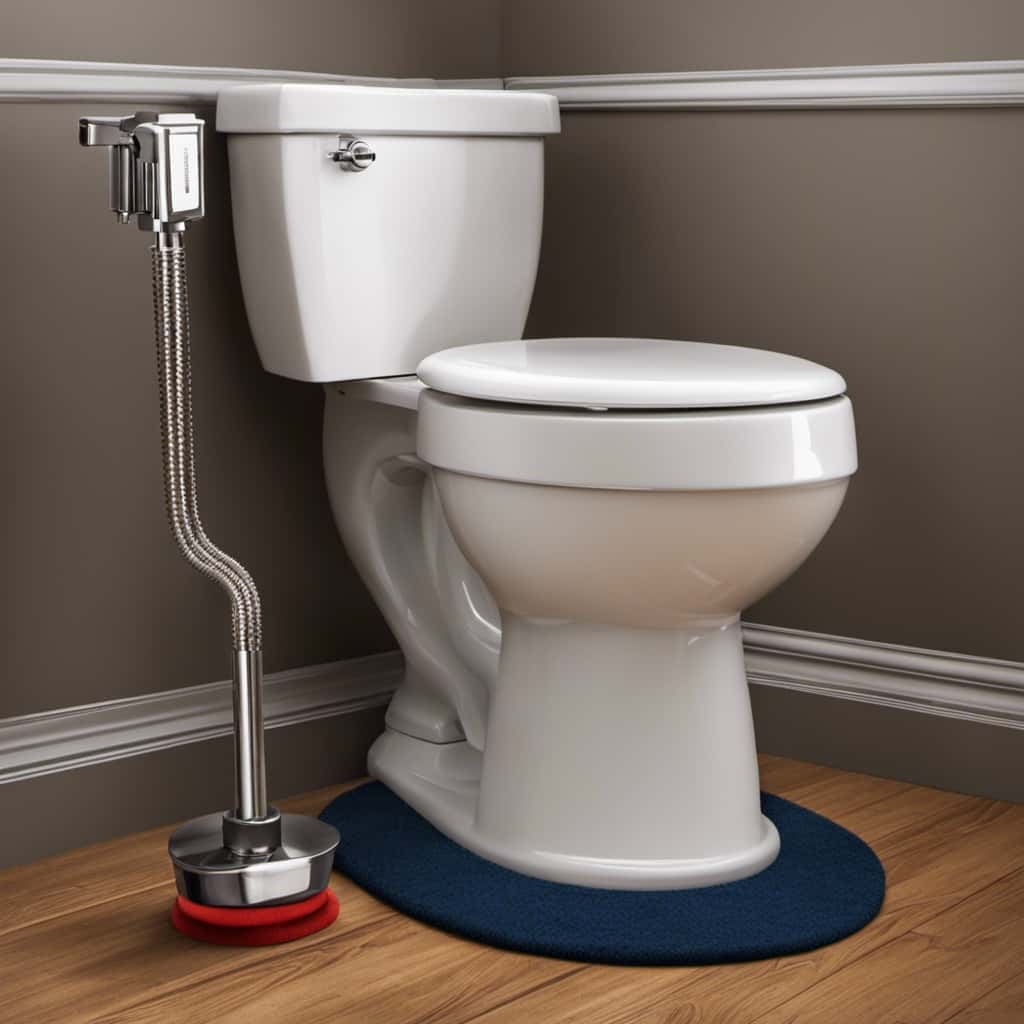
Best Practices for Using Bleach Tablets Safely
To ensure the safe use of bleach tablets, we should follow best practices that promote cleanliness and minimize any potential risks.
When using bleach tablets, it’s important to be aware of the toxicity concerns associated with them. Bleach tablets contain chemicals that can cause skin and eye irritation, and they can also release harmful fumes if mixed with other cleaning products.
To protect ourselves, it’s crucial to wear gloves and eye protection when handling bleach tablets. Additionally, proper storage is essential to prevent accidents. Bleach tablets should be kept in their original, tightly sealed container and stored in a cool, dry place, away from children and pets.
Frequently Asked Questions
How Long Do Bleach Tablets Typically Last in the Toilet Before Needing to Be Replaced?
In our experience, bleach tablets typically last a few weeks in the toilet before needing to be replaced. However, it is important to consider the effectiveness of bleach tablets and follow best practices for their use in toilets.

Can Bleach Tablets Cause Damage to the Plumbing System Beyond Just the Toilet Components?
Bleach tablets can have a negative impact on a plumbing system beyond just the toilet components. They can corrode pipes, leading to leaks and costly repairs. Consider using alternative toilet cleaners that are less damaging to your plumbing.
Are Bleach Tablets Safe to Use in Septic Systems?
Using bleach tablets in septic systems can have adverse environmental effects. We recommend exploring alternatives for maintaining a clean toilet, such as using oxygen-based cleaners or natural solutions.
Can Bleach Tablets Eliminate All Types of Stains in the Toilet Bowl?
Yes, bleach tablets can effectively eliminate various types of stains in the toilet bowl. Their powerful cleaning agents target and break down stains, leaving the bowl looking clean and fresh.
Do Bleach Tablets Have Any Impact on the Quality of the Water That Is Flushed?
Bleach tablets’ effectiveness in removing stains is well-documented. However, it is important to consider their impact on water quality. Studies have shown that bleach tablets can contribute to chemical contamination, affecting the overall quality of flushed water.
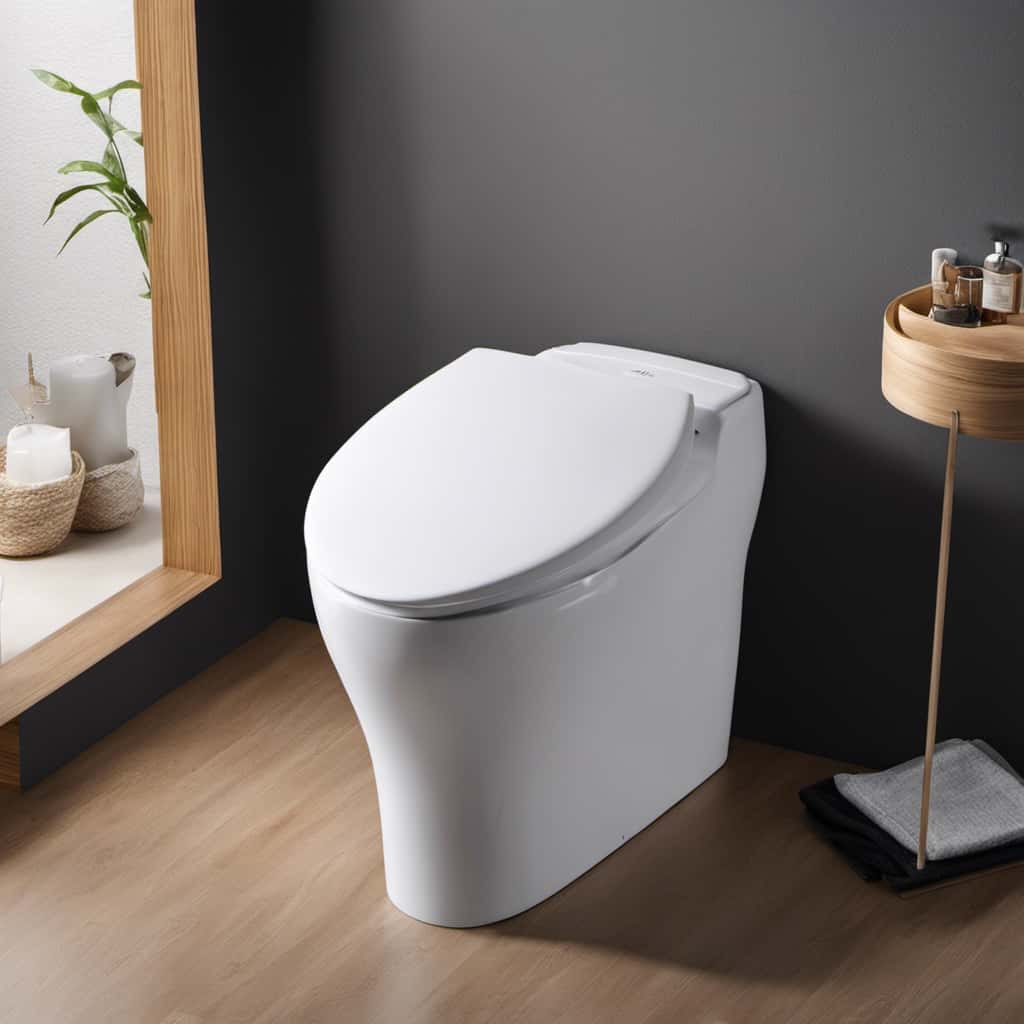
Conclusion
In conclusion, it’s crucial to be aware of the potential risks and negative impact of bleach tablets on your toilet and the environment.
While they may seem like a convenient cleaning solution, the effects on toilet components can lead to costly repairs.
Additionally, the environmental consequences of bleach tablets are significant.
It’s recommended to explore alternative cleaning options and adopt best practices for using bleach tablets safely to protect your toilet and the planet.
